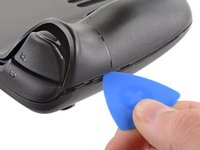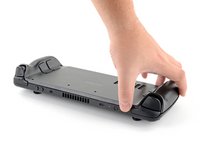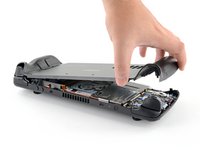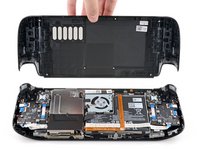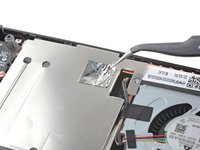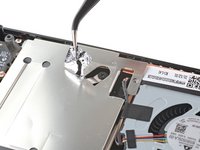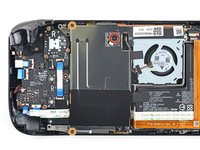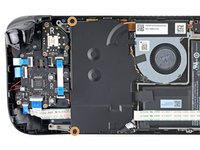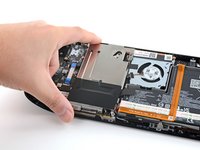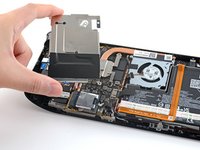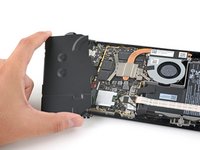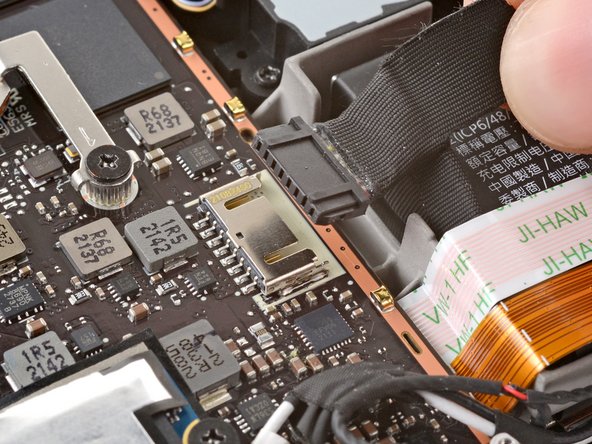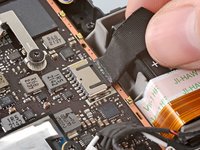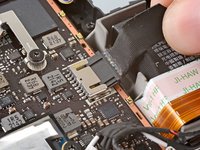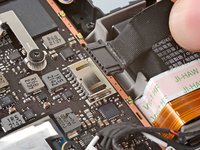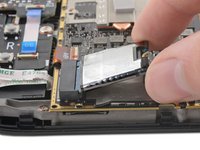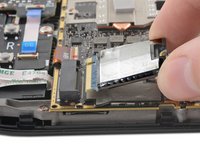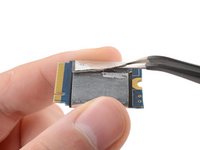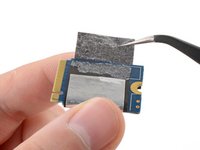Introduzione
Usa questa guida per sostituire o migliorare l'SSD nel tuo Steam Deck LCD. L'SSD dello Steam Deck è a lato singolo M.2 2230.
Per sostituire o aggiornare l'SSD in un Steam Deck OLED, segui invece questa guida.
Ricordati di seguire le procedure di sicurezza dalle scariche elettrostatiche (ESD) mentre ripari il tuo dispositivo.
Questi passi descrivono solo come rimuovere fisicamente e sostituire l'SSD. Avrai bisogno di software e strumenti aggiuntivi per installare un sistema operativo e fare funzionale l'SSD come previsto.
Segui le istruzioni per il ripristino di Steam Deck di Valve per recuperare, riparare o reimpostare l'SSD di Steam Deck con SteamOS. Per l'installazione di Windows, le risorse ufficiali sono disponibili qui.
Nota: I pulsanti, gli stick e i touchpad dello Steam Deck potrebbero non registrare gli input subito dopo aver reimpostato l'SSD. Utilizza lo schermo touchscreen per seguire la configurazione iniziale di SteamOS, consentendo al dispositivo di scaricare gli aggiornamenti. La funzionalità dovrebbe tornare una volta che lo Steam Deck si riavvia.
Nota: Valve ha iniziato a spedire Steam Deck con design interni aggiornati all'inizio del 2023. Il tuo Steam Deck potrebbe apparire diverso da quello raffigurato nelle foto, ma la procedura è la stessa. Rimuovi il coperchio posteriore per verificare quale versione possiedi. Uno Steam Deck originale avrà una protezione metallica della scheda madre e una ventola con lati quadrati, come mostrato qui. Uno Steam Deck aggiornato avrà una protezione della scheda madre nera e una ventola con lati curvi, come mostrato qui.
Cosa ti serve
Panoramica Video
-
-
Spegni il tuo Steam Deck e scollega tutti i cavi.
-
-
Attrezzo utilizzato in questo passaggio:Magnetic Project Mat$16.96
-
Usa un cacciavite a croce Phillips per rimuovere le otto viti che tengono fermo il pannello posteriore:
-
Quattro viti da 9,5 mm a filettatura grossa
-
Quattro viti da 5,8 mm a filettatura fine
-
-
-
Inserisci un plettro di apertura nella fessura sottile tra la cover posteriore e il guscio frontale, lungo il bordo dell'impugnatura destra.
-
Fai leva sulla cover posteriore per sganciare le clip di bloccaggio.
-
-
-
Afferra la cover posteriore dall'apertura che hai appena creato e sollevala e allontanala dal dispositivo per sganciare le clip sui lati lunghi.
-
Rimuovi la cover posteriore.
-
-
-
Attrezzo utilizzato in questo passaggio:Tweezers$4.99
-
Se possiedi una versione aggiornata dello Steam Deck con la copertura nera della scheda madre, salta questo passaggio.
-
Usa un paio di pinzette per rimuovere il pezzo di foglio d'alluminio che copre la vite nascosta sulla protezione della scheda madre.
-
-
-
Usa un cacciavite a croce Phillips per rimuovere le tre viti che tengono ferma la protezione della scheda:
-
Una vite da 3,4 mm
-
Due viti da 3,7 mm
-
-
-
Prendi il cavo della batteria dalla sua linguetta e tiralo via dalla scheda madre per scollegarlo.
-
-
-
Usa un cacciavite a croce Phillips per rimuovere la vite da 3,4 mm che tiene fermo l'SSD.
-
-
-
Afferra l'estremità dell'SSD e tiralo via dal suo connettore M.2 sulla scheda madre per rimuoverlo.
-
-
-
Fai scorrere la schermatura per rimuoverla dall’SSD.
-
Se la schermatura sembra bloccata, utilizza un paio di pinzette per staccarla e rimuoverla, fai attenzione a mantenerla nelle migliori condizioni possibili se vorrai riutillizzarla.
-
Rimane solo l'SSD.
-
Nota: I pulsanti, gli stick e i touchpad dello Steam Deck potrebbero non registrare gli input subito dopo aver reimpostato l'SSD. Utilizza lo schermo touchscreen per seguire la configurazione iniziale di SteamOS, consentendo al dispositivo di scaricare gli aggiornamenti. La funzionalità dovrebbe tornare una volta che lo Steam Deck si riavvia.
-
Per rimontare il dispositivo, segui le istruzioni in ordine inverso.
Per recuperare, riparare o reimpostare l'SSD del tuo Steam Deck con SteamOS, segui le istruzioni per il ripristino dello Steam Deck di Valve.
Porta i tuoi rifiuti elettronici a un riciclatore certificato R2 o e-Stewards.
La riparazione non è andata secondo i piani? Prova delle soluzioni ai problemi di base, o chiedi alla nostra comunità Risposte Steam Deck per trovare aiuto.
Annulla: non ho completato questa guida.
Altre 341 persone hanno completato questa guida.
Un ringraziamento speciale a questi traduttori:
100%
Questi traduttori ci stanno aiutando ad aggiustare il mondo! Vuoi partecipare?
Inizia a tradurre ›
70Commenti sulla guida
idk why valve couldn't have just made the m.2 slot a 2230/2242/2260 & 2280 m.2 NVMe SSDs support??/ they could have done it! im hoping someone out there can make a new back shell that includes the nvme. m2 adapter riser cable extender that moves the nvme ssd to the back case somewhere else with more room and to also not only allow for better cooling of the SSD but also allows us to use any size m.2 nvme SSDs like 2230 up to 2280 m.2 size ssds as i have tons of gen3 x4 2280 nvme ssd lying around from all my AMD ryzen machines from my 1800X X370 all way up to X570 and 5700X / 5800X & 5800X3D etc..
I think it has to do with power draw... The Steam Deck isn't designed to cope with a incredibly fast (and power hungry) 2280 drive. I learned this the hard way on my laptop. I changed the drive myself to a 5500MB/s one and I could tell that not only did the SSD run hotter but also the components surrounding the SSD, it completely changed the thermal characteristics of the device. I added this drive to my desktop computer instead and bought a low powered one for the laptop. By having a 2230 drive on the Steam Deck, Valve forces users to choose drives that are typically designed for small and low powered devices.
Dennis -
lol thats a massive first world problem. we dont all have "tons" of m2 drives, ya know a reletively new tech, laying around
sk8r2211 -
Why are you complaining about the specs of a Steam Deck on an ifixit guide comment section? If there's a moderator around feel free to remove my and this person's comment.
and possibly even a m.2 door/cover to allow easier m.2 ssd removal W/O having to disassemble our steam deck! if the battery needs unplugged then a battery "KILLSWITCH" or "BATTERY DISCONNECT" Switch be also added to the decks after market backplate/cover to allow the steam decks battery to be disconnected from the unit with a toggle of a switch? allows for safter disassembly and m.2 SSD replacement with out having to repeatedly disassemble the steam deck....(SSD nand flash memory can fail) if i had the tools and capabilities to do this myself i would/ but i still dont even have my steam deck yet (Q3 July -Sept. 2022 ;( my friend just got his (ordered on same day) so WTF is mine valve!?????











